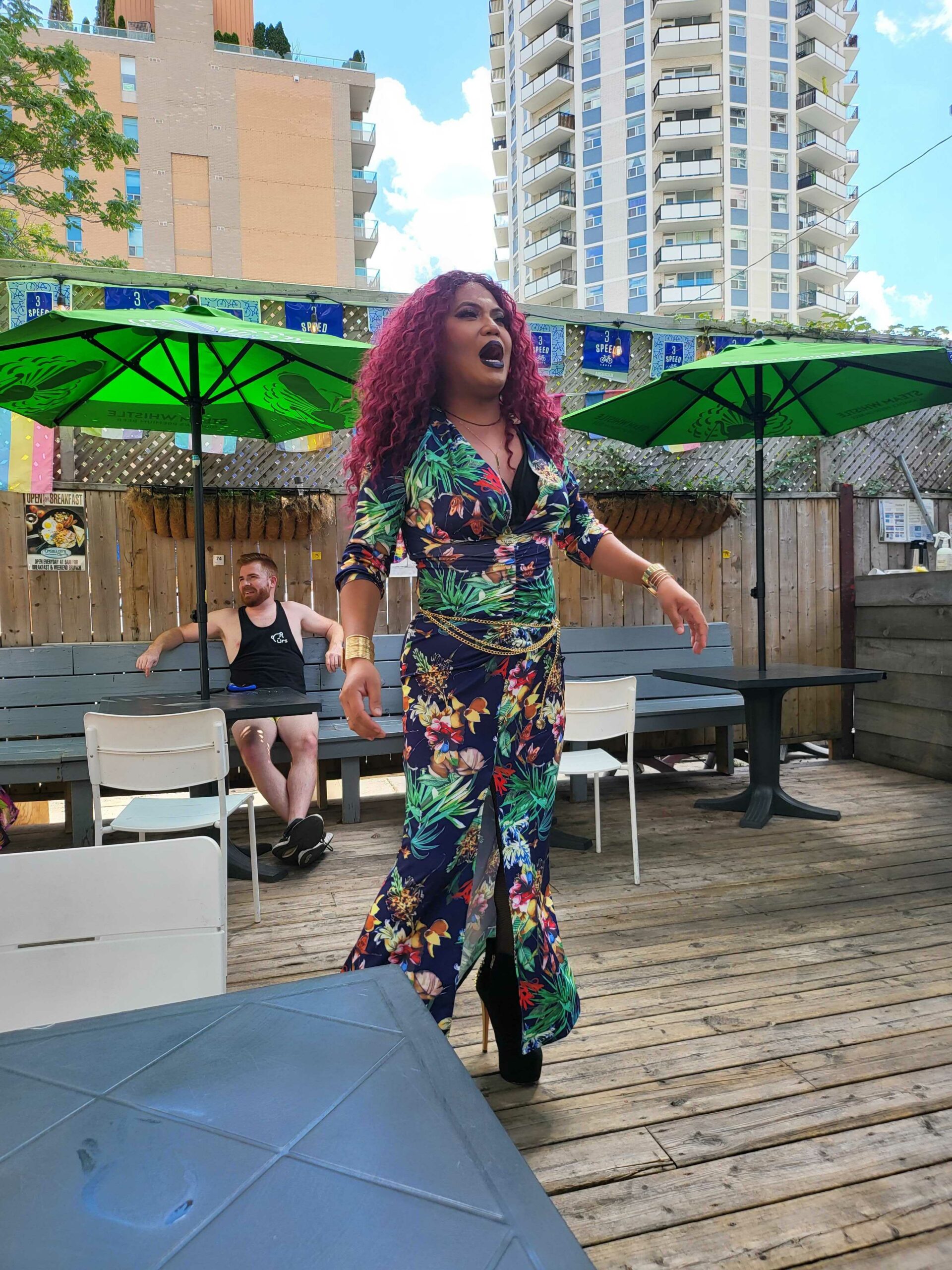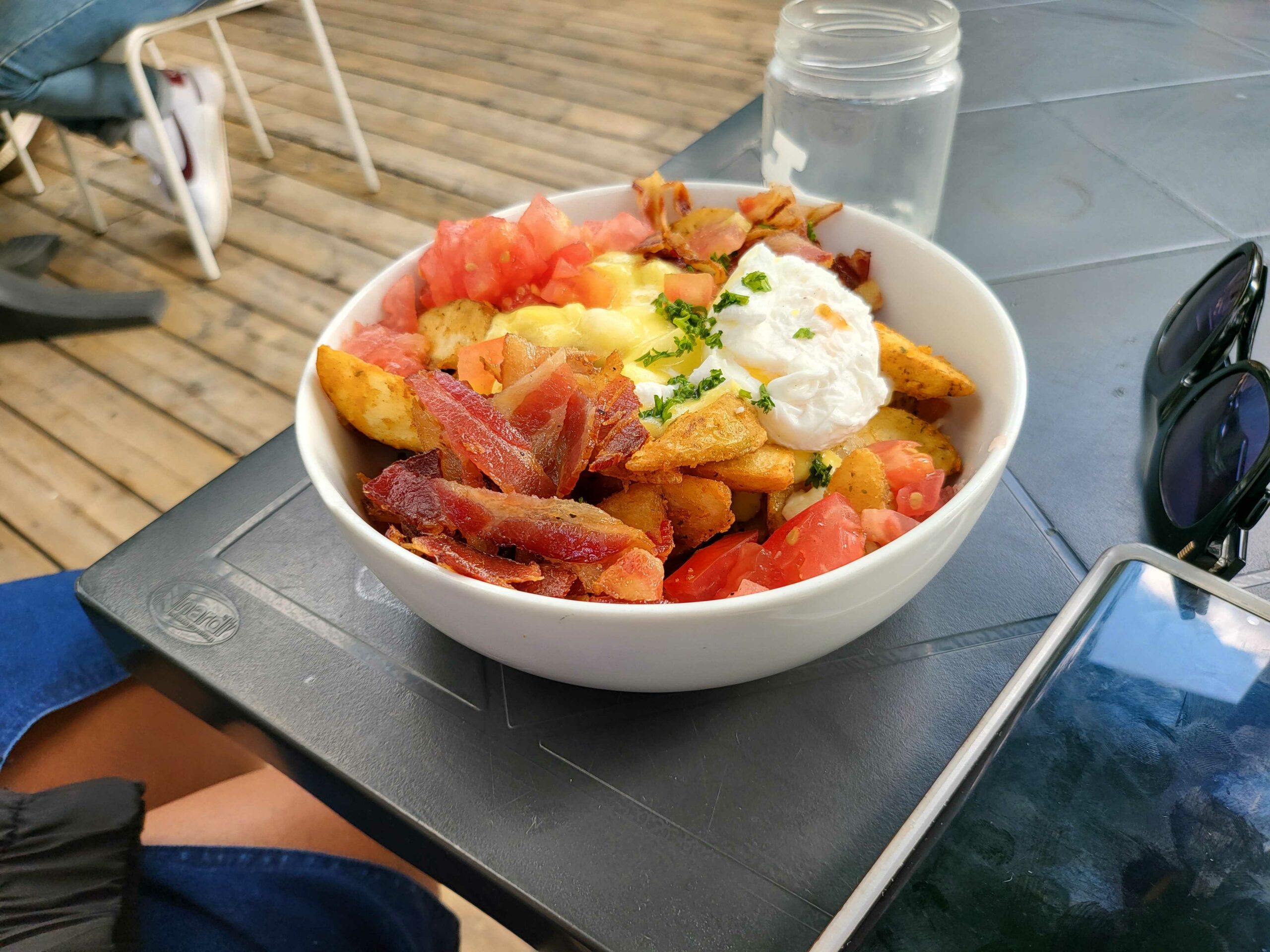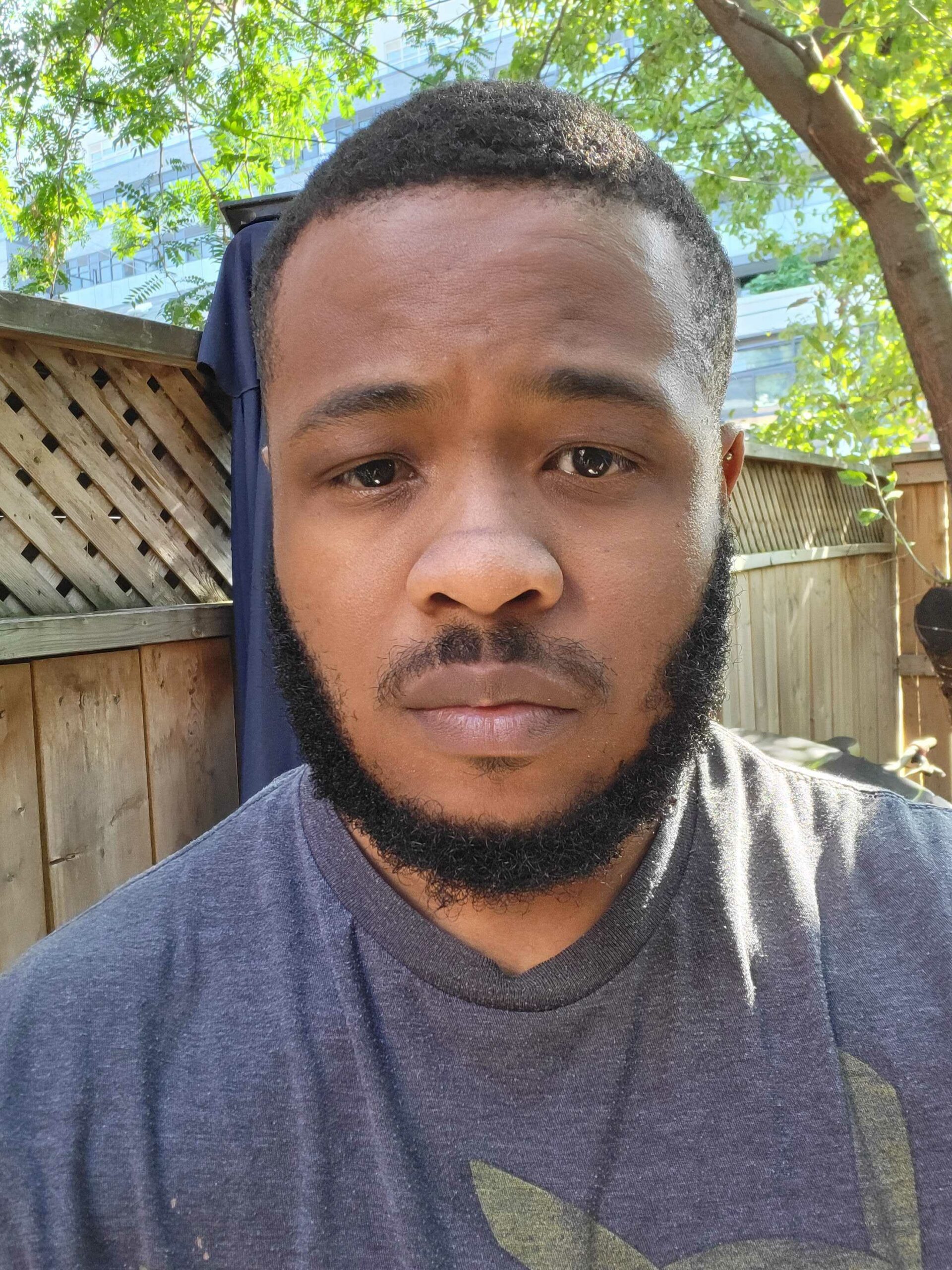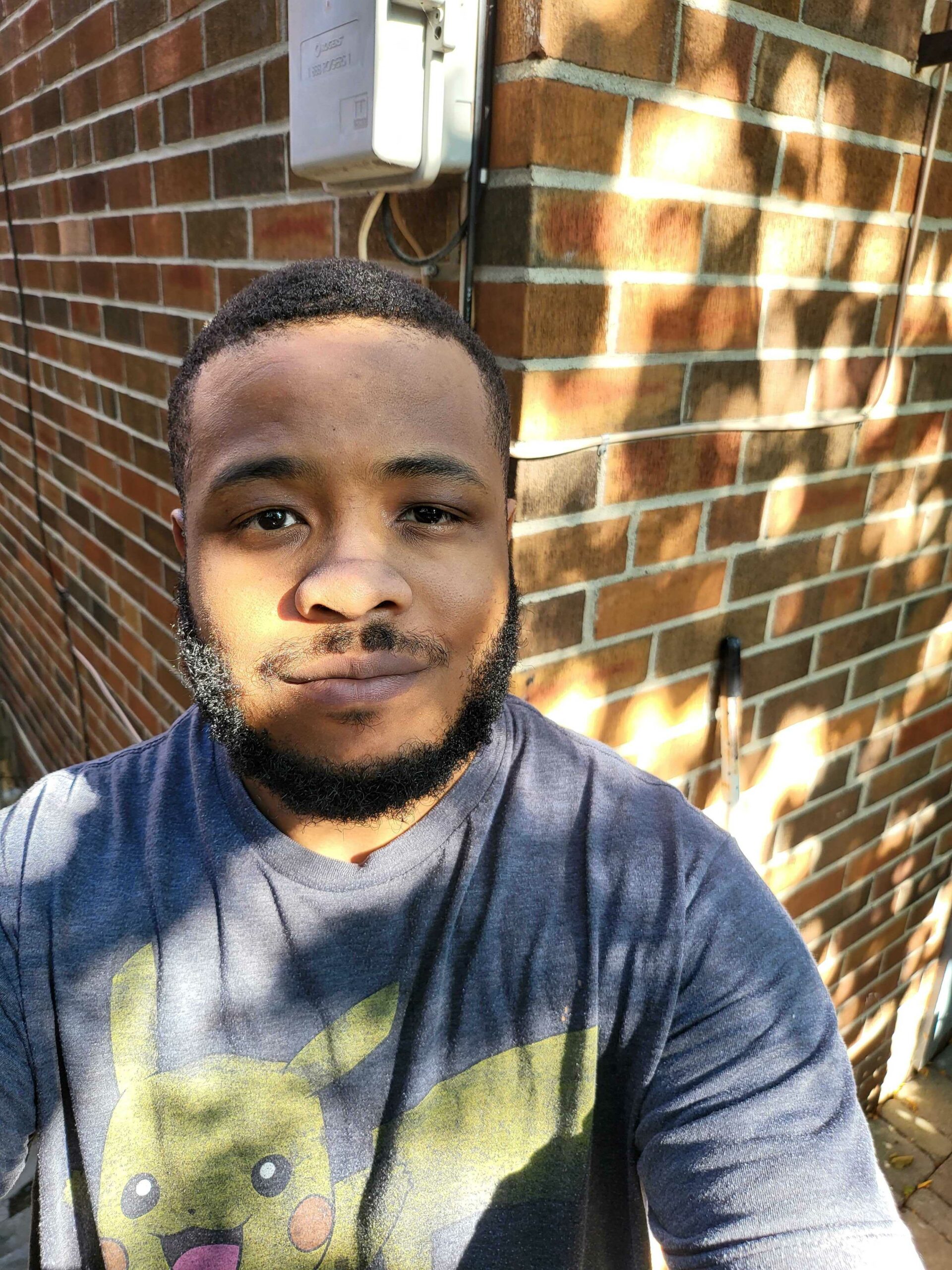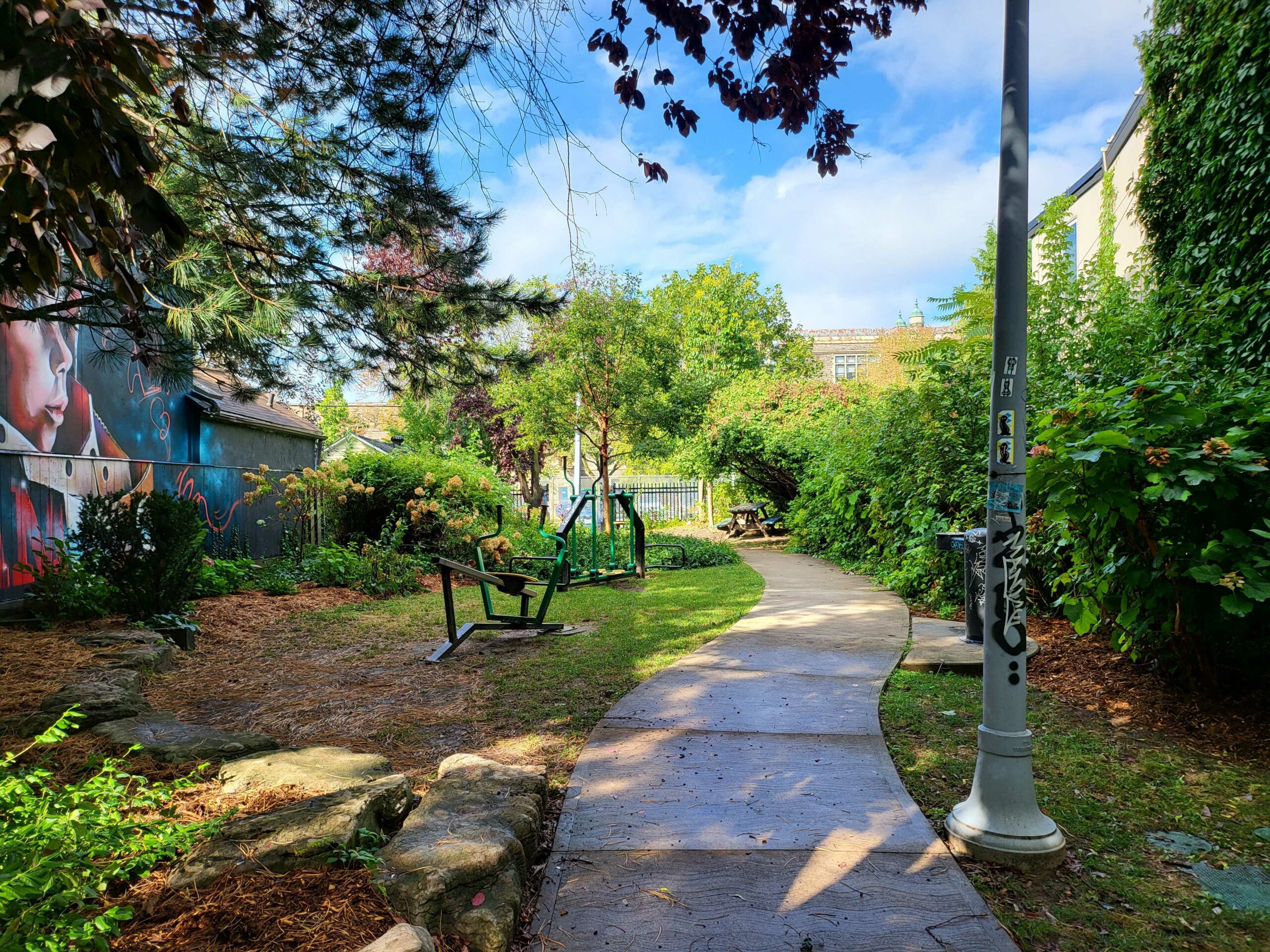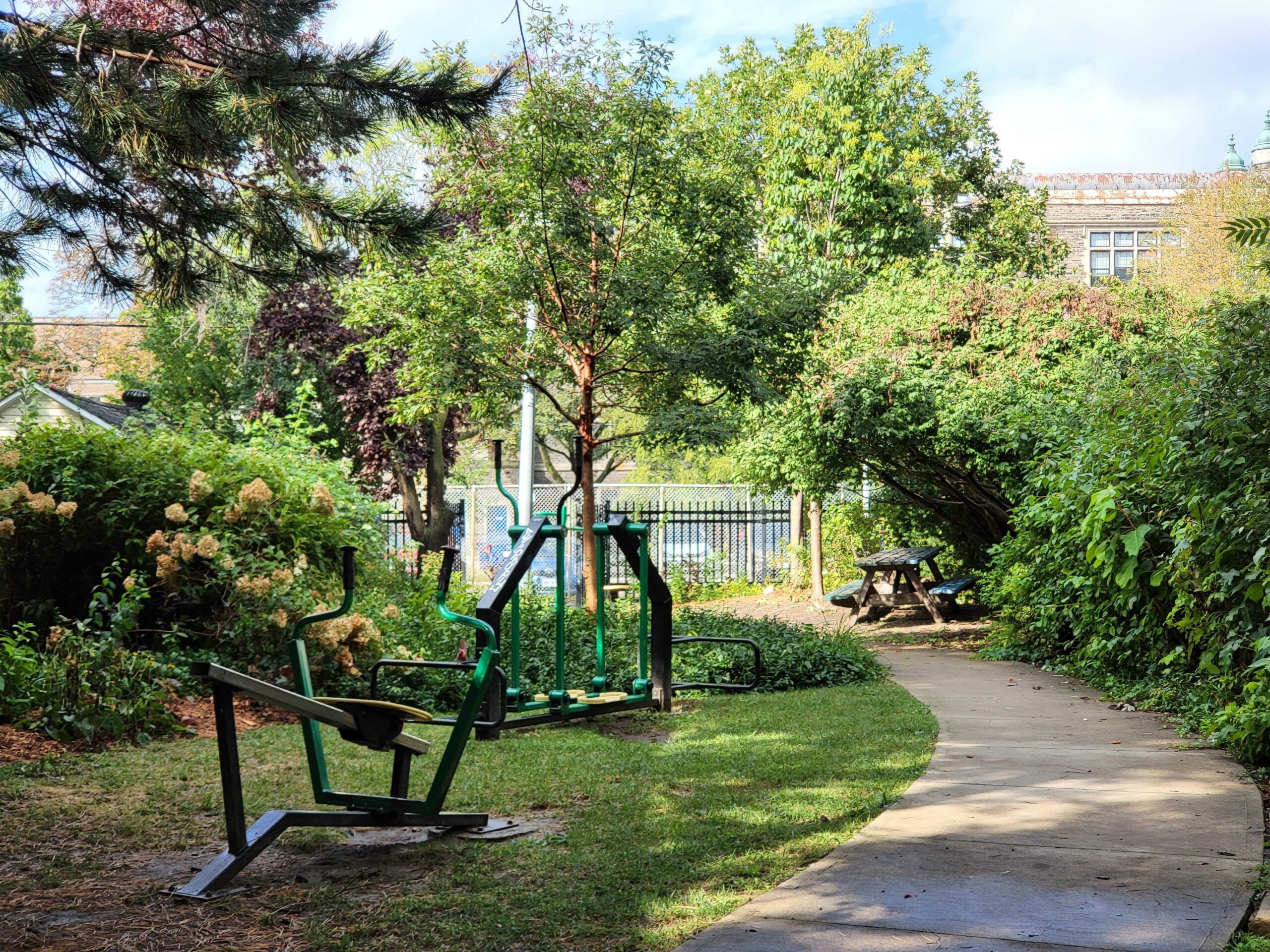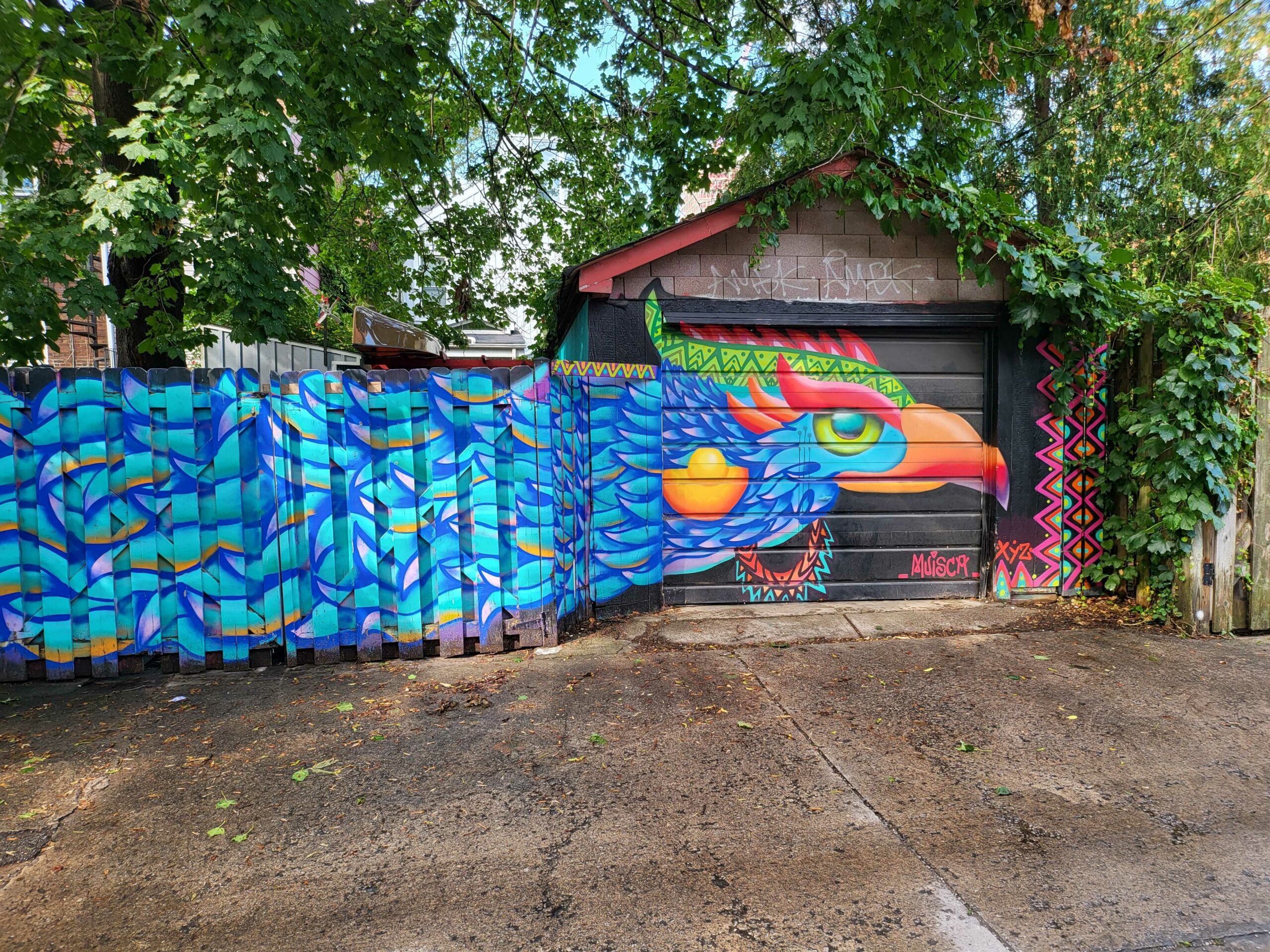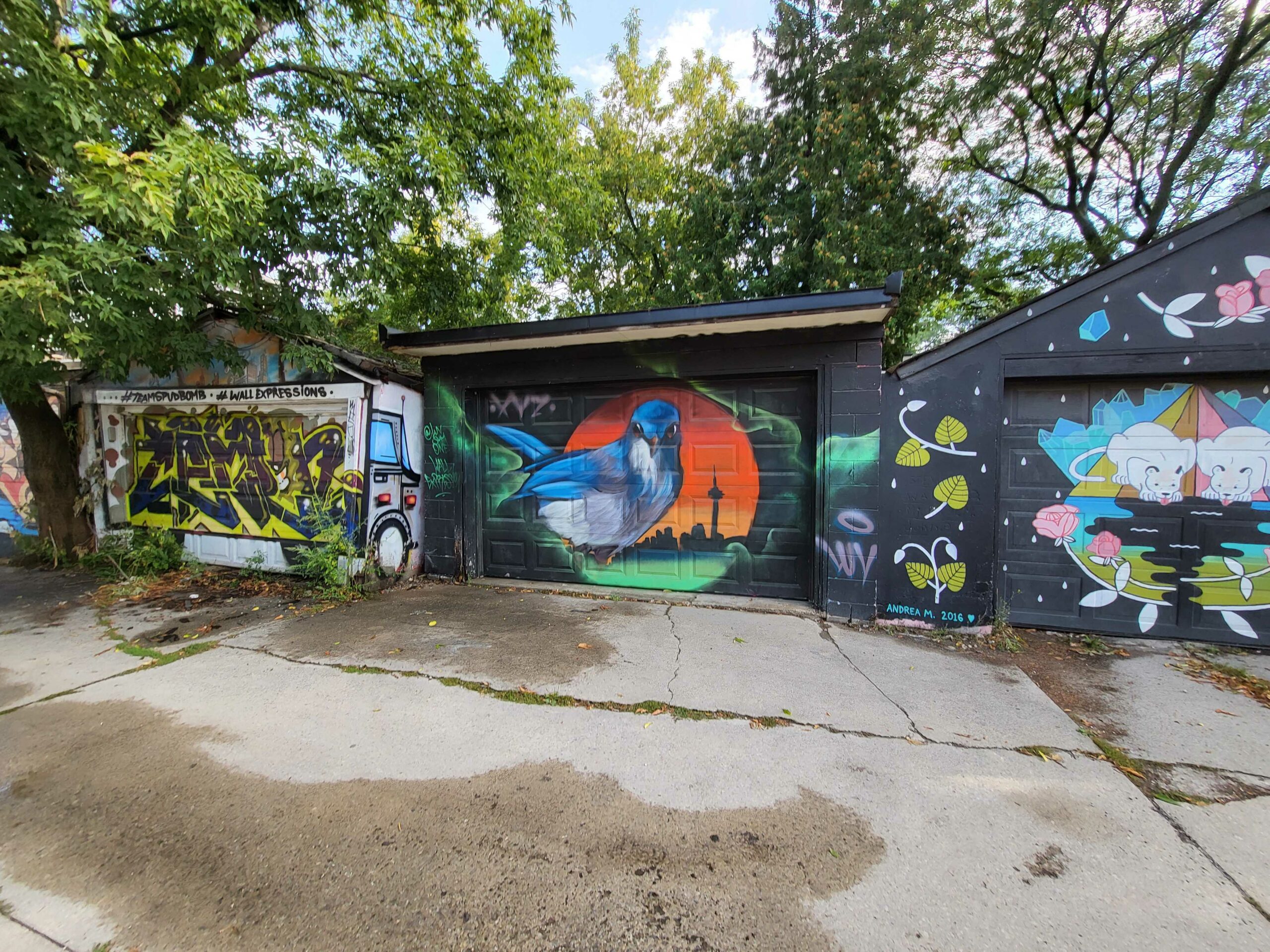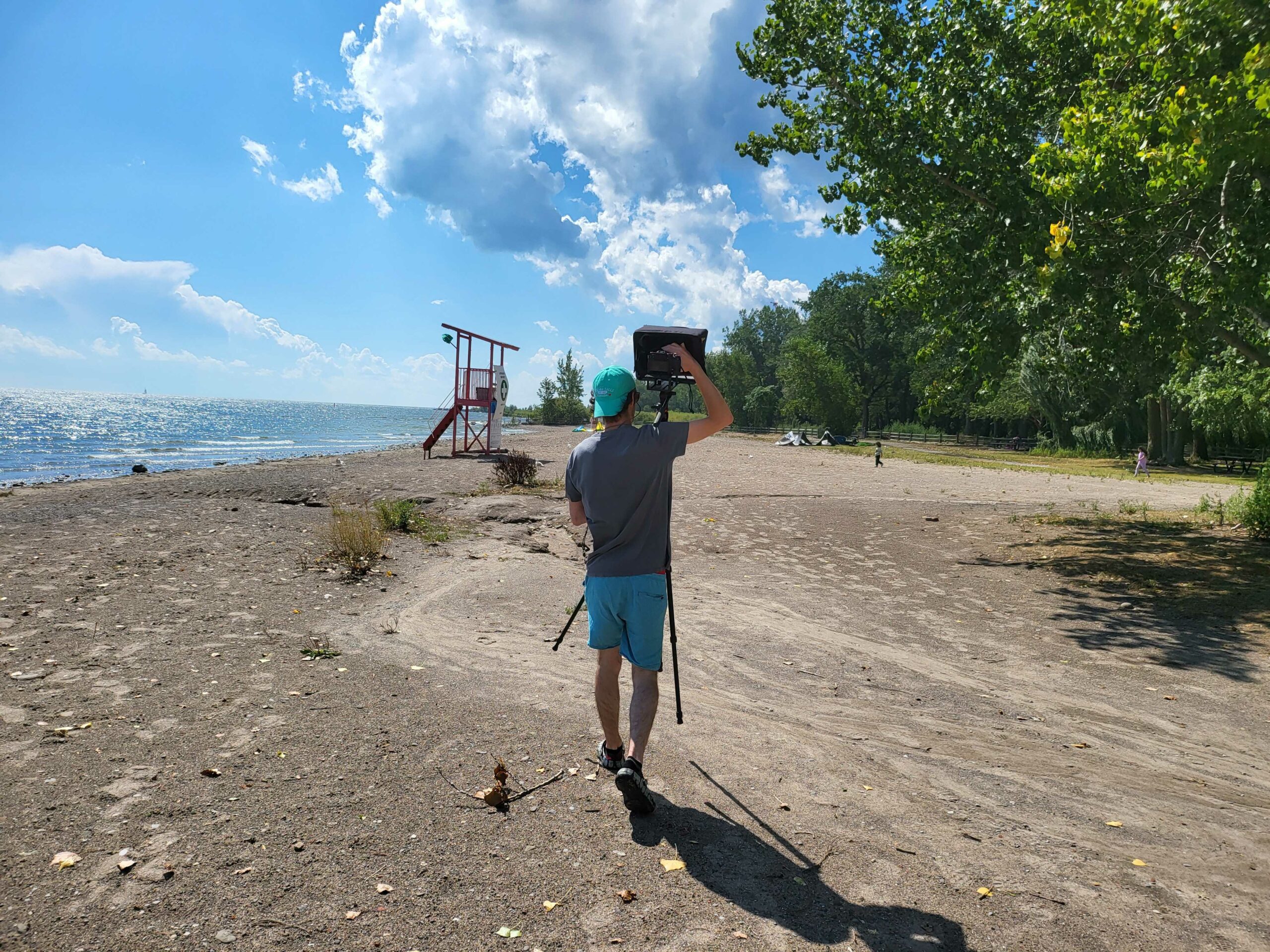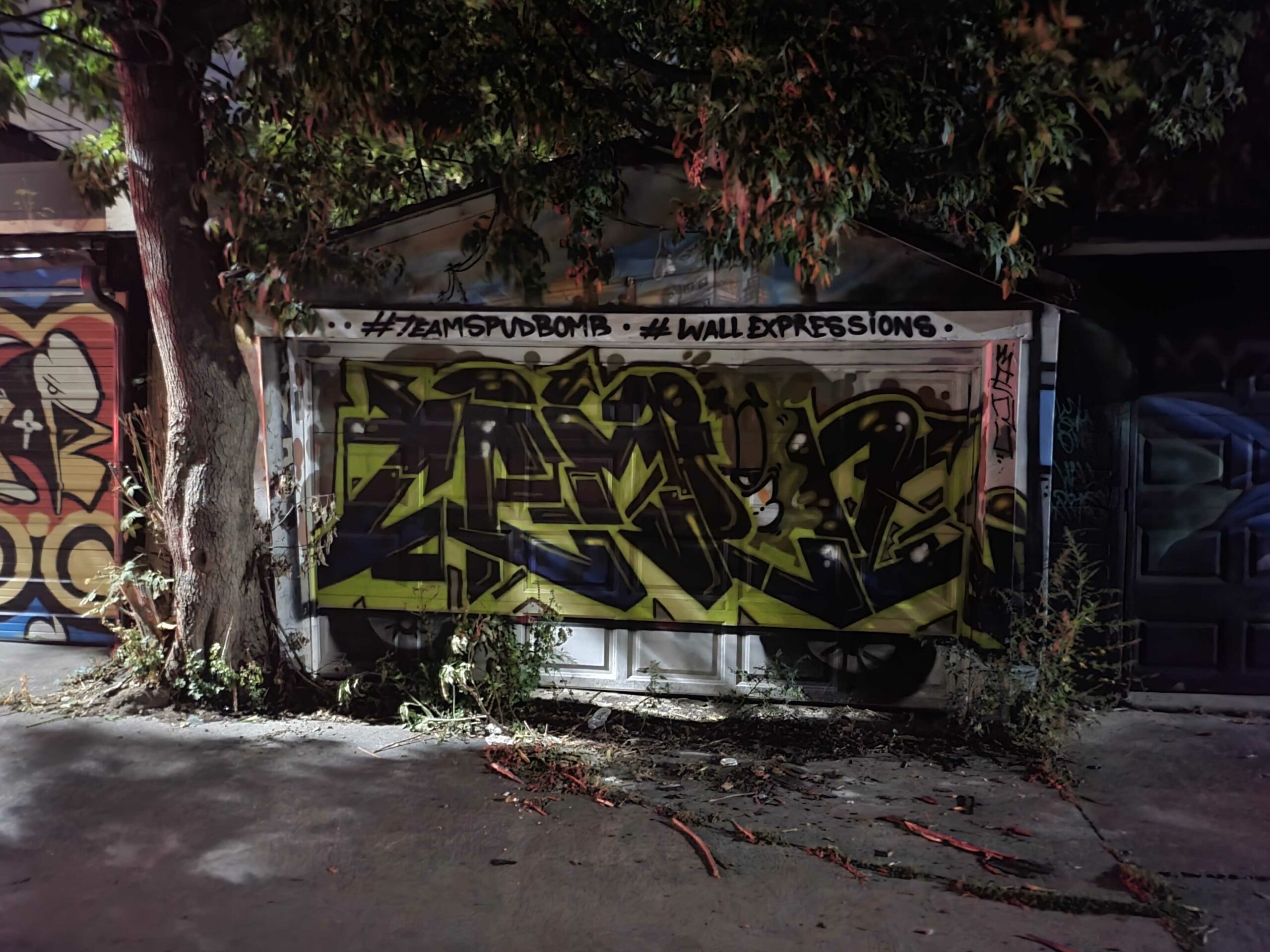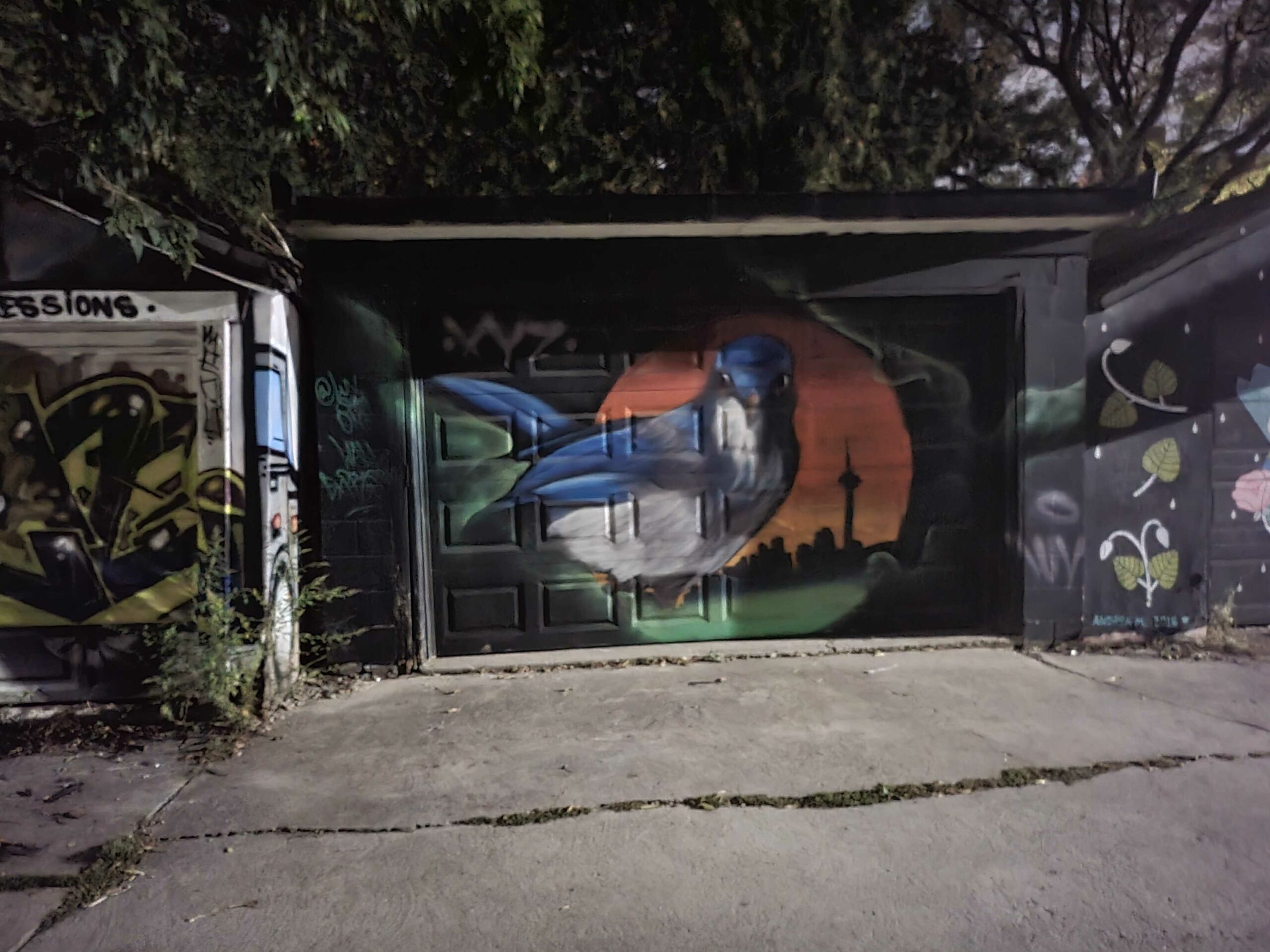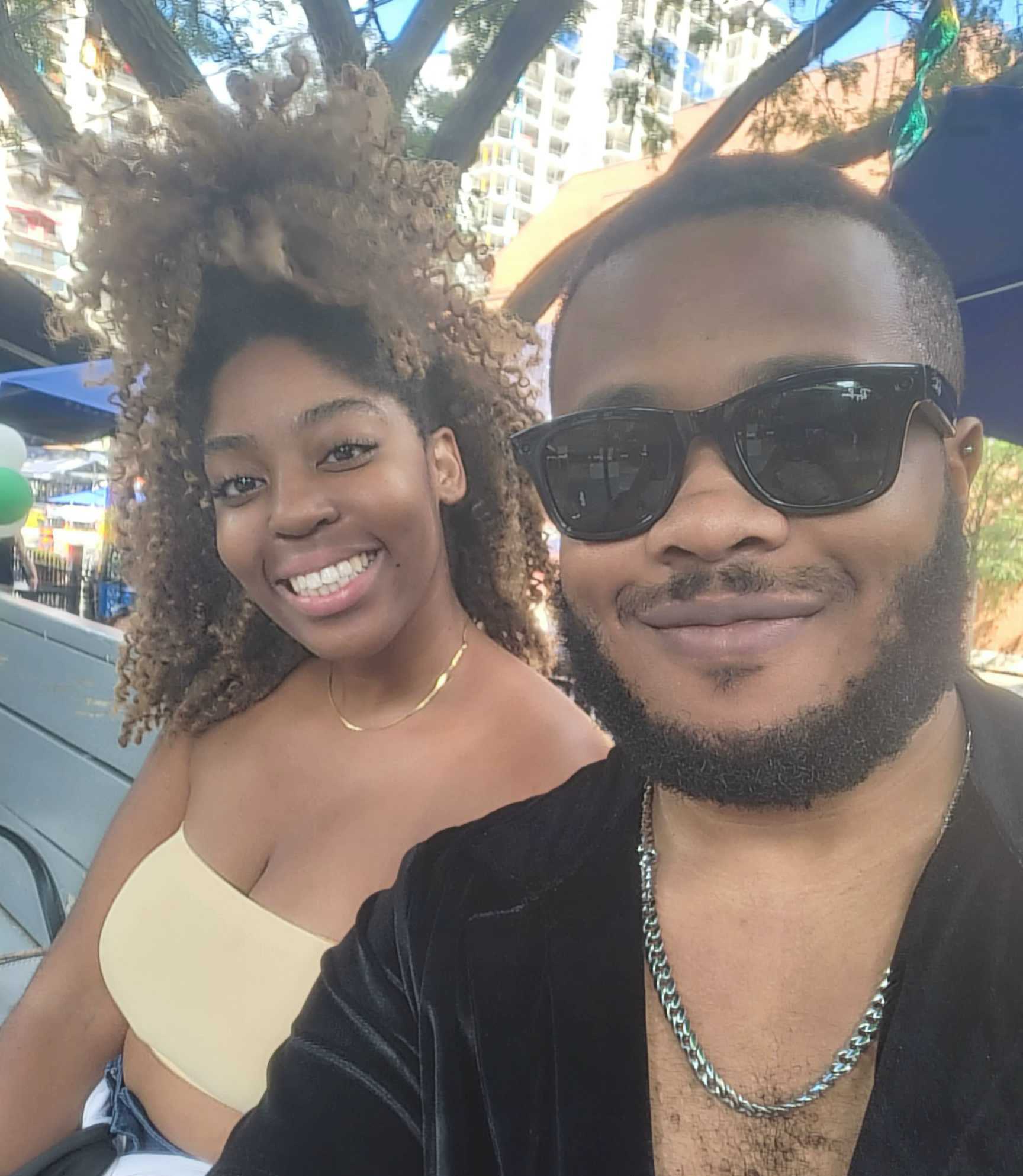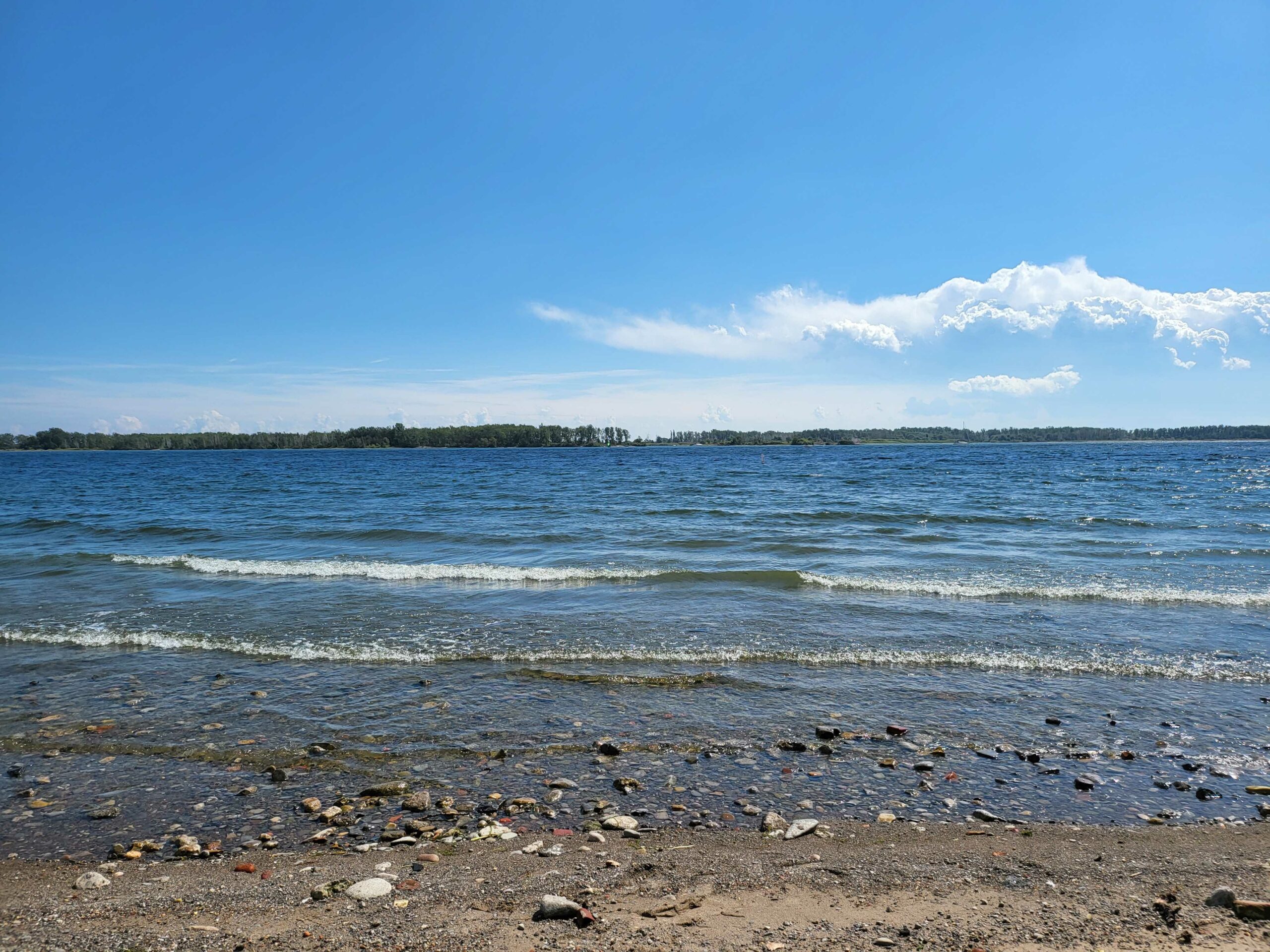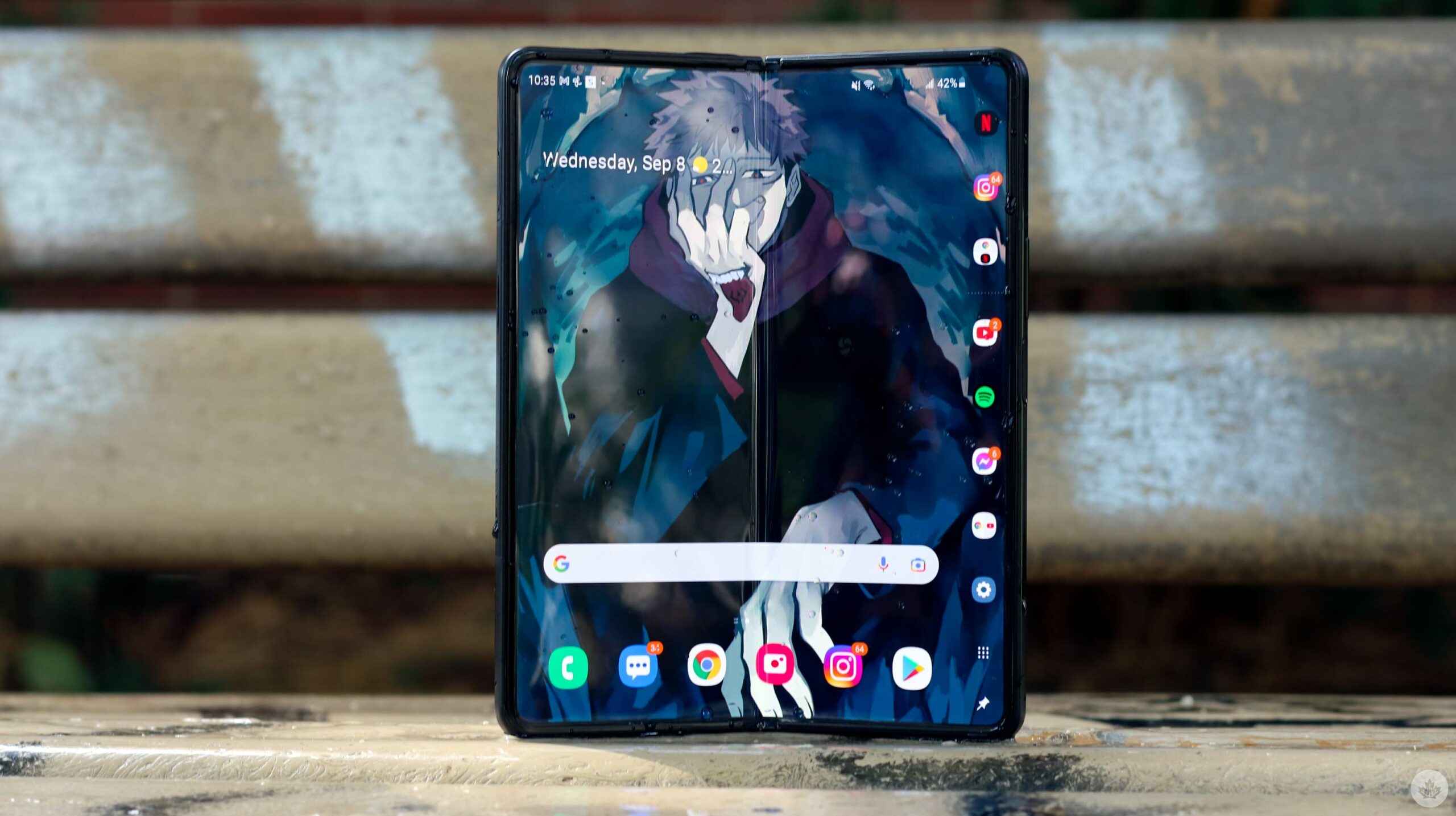
The Pros
- Waterproof and more durable
- The UI works so well with the larger device
- Screen feels so much better
The Cons
- Still too expensive
- The cameras aren’t to par with the price you’re paying, especially the UDC
- Still too large, awkward and gimmicky for most
Similar to last year’s Galaxy Z Fold 2, the Galaxy Z Fold 3 is one of my favourite Android devices I’ve ever used. The smartphone-tablet hybrid is beautifully designed, feels great, works incredibly smoothly, and even functions with the ever-beloved S-Pen.
While the Z Fold 3 is around $500 cheaper than last year’s model at launch, the $2,270 price tag means it’s still a far cry from being an affordable smartphone.
That said, I’m the type of smartphone user that typically wants the best of the best — so if I had to purchase a new device today, it’d be the Z Fold 3, in all its magnificence. However, if you’re not the type of person who wants to carry around a literal tablet in your pocket, the Z Flip 3 or the S21 Ultra might be a better choice, as far as Samsung devices are concerned.
While the Z Fold 3 isn’t a significant leap over the Z Fold 2 (like the monumental jump in specs the Fold 2 had over the original Fold), the fact that it’s more affordable feels higher quality, and is somehow actually IPX8 water-resistant makes it one of the first foldable smartphones with nearly no compromises.
Samsung Galaxy Z Fold 3
Samsung Galaxy Z Fold 2
Samsung Galaxy Z Flip 3
Display
7.6-inch QXGA+ Dynamic AMOLED 2X Infinity Flex, 2,208 x 1,768 pixels + 6.2-inch Dynamic AMOLED 2X, 2,268 x 832 pixels - 120Hz
7.6-inch QXGA+ Dynamic AMOLED 2X Infinity Flex, 2,208 x 1,768 pixels + 6.2-inch Super AMOLED, 2,260 x 816 pixels
6.7-inch Foldable FHD+ Dynamic AMOLED 2X, 2,640 x 1,080 pixels, 120Hz refresh rate | Cover display 1.9-inch Super AMOLED 260 x 512 pixels
Processor
Snapdragon 888
Snapdragon 865+
Snapdragon 888
RAM
12GB of RAM
12GB of RAM
8GB of RAM
Storage
256GB/512GB of storage
256GB
128GB/256GB of storage
Dimensions (in.)
Unfolded: 158.2 x 128.2 x 6.4 mm | Folded: 158.2. x 67.1 x 16 mm
Unfolded: 159.2 x 128.2 x 6.9-6.0 mm | Folded: 159.2. x 68.0 x 13.8 mm
Unfolded: 166 x 72.2 x 6.9mm | Folded: 86.4 x 72.2 x 17.1 mm
Weight
271g
282g
183g
Rear Facing Camera
12-megapixel (wide, f/1.8) + 12-megapixel (Ultra wide, f/2.2) + 12-megapixel (telephoto, f/2.4)
12-megapixel (Ultra wide, f/2.2) + 12-megapixel (wide, f/1.8) + 12-megapixel (telephoto, f/2.4)
12-megapixel (f/1.8) + 12-megapixel (f/2.2)
Front Facing Camera
10-megapixel (f/2.2) + 4-megapixel (f/1.8)
10-megapixel (f/2.2)
10-megapixel (f/2.4)
OS
Android 11
Android 10
Android 11
Battery
4,400mAh
4,500mAh
3,300mAh
Network Connectivity
LTE/ 5G
GSM/HSPA/LTE/5G
LTE/ 5G
Sensors
Fingerprint sensor (side mounted), accelerometer, gyro, proximity sensor, compass, barometer
Fingerprint (side-facing), accelerometor, gyro, proximity, compass`
Fingerprint sensor (side mounted), accelerometer, gyro, proximity sensor, compass, barometer
SIM Type
Nano SIM
Nano SIM
Nano SIM
Launch Date
August 11, 2021
September 1, 2020
August 11, 2021
Misc
Colours: Phantom Black, Phantom Green, Phantom Silver
Colours: Mystic Bronze
Colours: Cream, Green, Lavendar, Phantom Black, Gray (Samsung.com Exclusive), White (Samsung.com Exclusive), Pink (Samsung.com Exclusive)
Display
Samsung Galaxy Z Fold 3
7.6-inch QXGA+ Dynamic AMOLED 2X Infinity Flex, 2,208 x 1,768 pixels + 6.2-inch Dynamic AMOLED 2X, 2,268 x 832 pixels - 120Hz
Samsung Galaxy Z Fold 2
7.6-inch QXGA+ Dynamic AMOLED 2X Infinity Flex, 2,208 x 1,768 pixels + 6.2-inch Super AMOLED, 2,260 x 816 pixels
Samsung Galaxy Z Flip 3
6.7-inch Foldable FHD+ Dynamic AMOLED 2X, 2,640 x 1,080 pixels, 120Hz refresh rate | Cover display 1.9-inch Super AMOLED 260 x 512 pixels
Processor
Samsung Galaxy Z Fold 3
Snapdragon 888
Samsung Galaxy Z Fold 2
Snapdragon 865+
Samsung Galaxy Z Flip 3
Snapdragon 888
RAM
Samsung Galaxy Z Fold 3
12GB of RAM
Samsung Galaxy Z Fold 2
12GB of RAM
Samsung Galaxy Z Flip 3
8GB of RAM
Storage
Samsung Galaxy Z Fold 3
256GB/512GB of storage
Samsung Galaxy Z Fold 2
256GB
Samsung Galaxy Z Flip 3
128GB/256GB of storage
Dimensions (in.)
Samsung Galaxy Z Fold 3
Unfolded: 158.2 x 128.2 x 6.4 mm | Folded: 158.2. x 67.1 x 16 mm
Samsung Galaxy Z Fold 2
Unfolded: 159.2 x 128.2 x 6.9-6.0 mm | Folded: 159.2. x 68.0 x 13.8 mm
Samsung Galaxy Z Flip 3
Unfolded: 166 x 72.2 x 6.9mm | Folded: 86.4 x 72.2 x 17.1 mm
Weight
Samsung Galaxy Z Fold 3
271g
Samsung Galaxy Z Fold 2
282g
Samsung Galaxy Z Flip 3
183g
Rear Facing Camera
Samsung Galaxy Z Fold 3
12-megapixel (wide, f/1.8) + 12-megapixel (Ultra wide, f/2.2) + 12-megapixel (telephoto, f/2.4)
Samsung Galaxy Z Fold 2
12-megapixel (Ultra wide, f/2.2) + 12-megapixel (wide, f/1.8) + 12-megapixel (telephoto, f/2.4)
Samsung Galaxy Z Flip 3
12-megapixel (f/1.8) + 12-megapixel (f/2.2)
Front Facing Camera
Samsung Galaxy Z Fold 3
10-megapixel (f/2.2) + 4-megapixel (f/1.8)
Samsung Galaxy Z Fold 2
10-megapixel (f/2.2)
Samsung Galaxy Z Flip 3
10-megapixel (f/2.4)
OS
Samsung Galaxy Z Fold 3
Android 11
Samsung Galaxy Z Fold 2
Android 10
Samsung Galaxy Z Flip 3
Android 11
Battery
Samsung Galaxy Z Fold 3
4,400mAh
Samsung Galaxy Z Fold 2
4,500mAh
Samsung Galaxy Z Flip 3
3,300mAh
Network Connectivity
Samsung Galaxy Z Fold 3
LTE/ 5G
Samsung Galaxy Z Fold 2
GSM/HSPA/LTE/5G
Samsung Galaxy Z Flip 3
LTE/ 5G
Sensors
Samsung Galaxy Z Fold 3
Fingerprint sensor (side mounted), accelerometer, gyro, proximity sensor, compass, barometer
Samsung Galaxy Z Fold 2
Fingerprint (side-facing), accelerometor, gyro, proximity, compass`
Samsung Galaxy Z Flip 3
Fingerprint sensor (side mounted), accelerometer, gyro, proximity sensor, compass, barometer
SIM Type
Samsung Galaxy Z Fold 3
Nano SIM
Samsung Galaxy Z Fold 2
Nano SIM
Samsung Galaxy Z Flip 3
Nano SIM
Launch Date
Samsung Galaxy Z Fold 3
August 11, 2021
Samsung Galaxy Z Fold 2
September 1, 2020
Samsung Galaxy Z Flip 3
August 11, 2021
Misc
Samsung Galaxy Z Fold 3
Colours: Phantom Black, Phantom Green, Phantom Silver
Samsung Galaxy Z Fold 2
Colours: Mystic Bronze
Samsung Galaxy Z Flip 3
Colours: Cream, Green, Lavendar, Phantom Black, Gray (Samsung.com Exclusive), White (Samsung.com Exclusive), Pink (Samsung.com Exclusive)
Premium folding phone
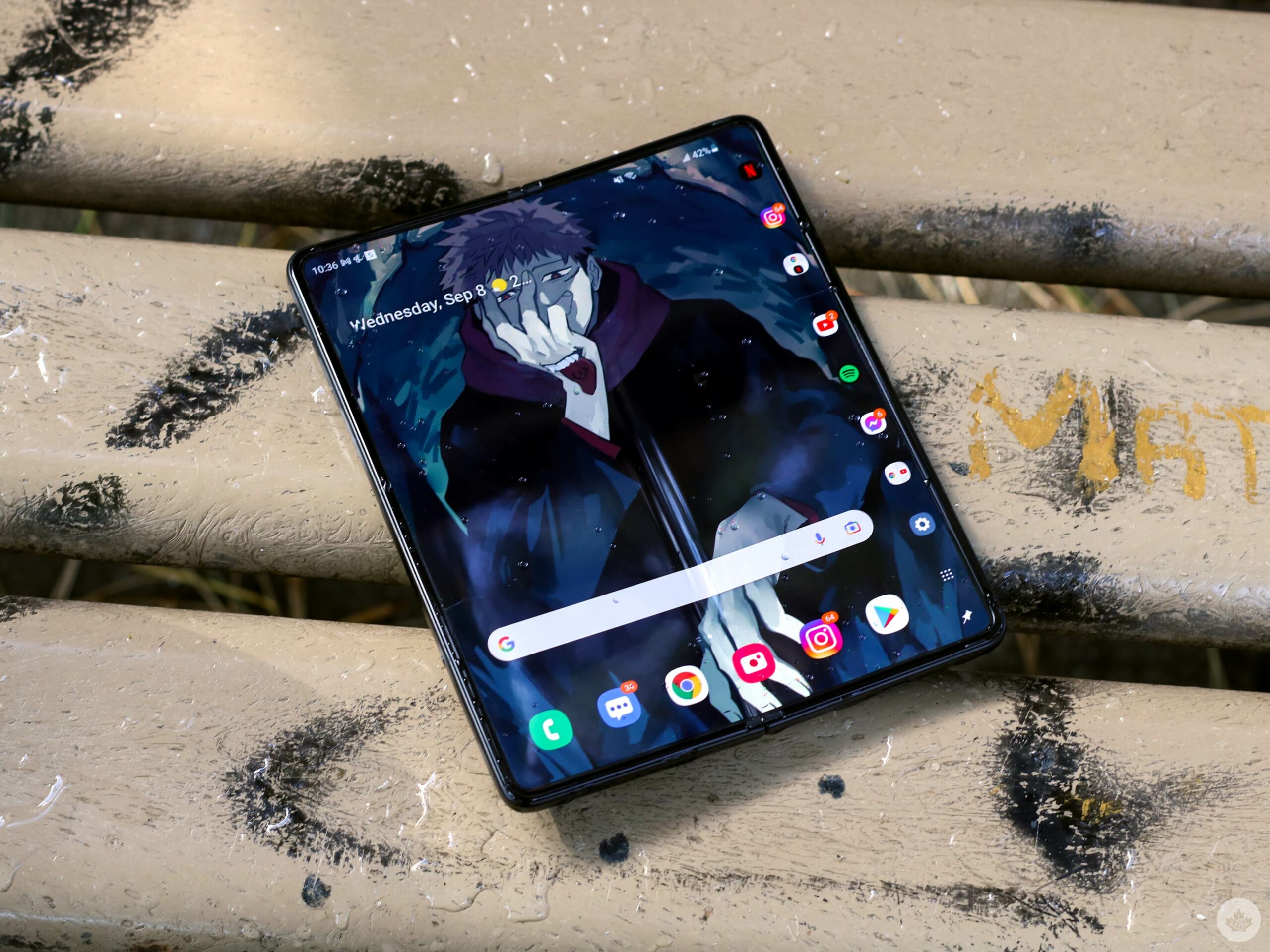
The Z Fold 3 is definitely not for everyone, because it’s quite large — especially when it’s in a case. This year’s model weighs 271g compared to the Z Fold 2’s 282g. Even though it’s only a bit lighter on paper, the difference is pretty noticeable when you’re actually holding the Galaxy Z Fold 3. As a result, I no longer dread lugging around the Fold 3, like I did with the Fold 2.
Dimension-wise, the Z Fold 3 is only slightly shorter than its predecessor, despite being noticeably thinner. However, it’s still a very large phone that might be too big for some people’s pockets. For example, I was recently wearing denim shorts and noticed that the device was even too large for them. If you tend to shop in the “women’s section” at clothing stores, you’ll probably experience a similar issue.
“Just like the Z Fold 2 and Z Flip 3, the crease is still noticeable and I don’t think it will ever go away.”
Despite its size, I still really liked holding the Z Fold 3. Samsung kept the premium-feeling matte finish on the foldable device’s rear, unlike the Z Flip 3. This made it easier to avoid leaving fingerprints on the phone’s back glass, but you can still smudge it with greasy hands.
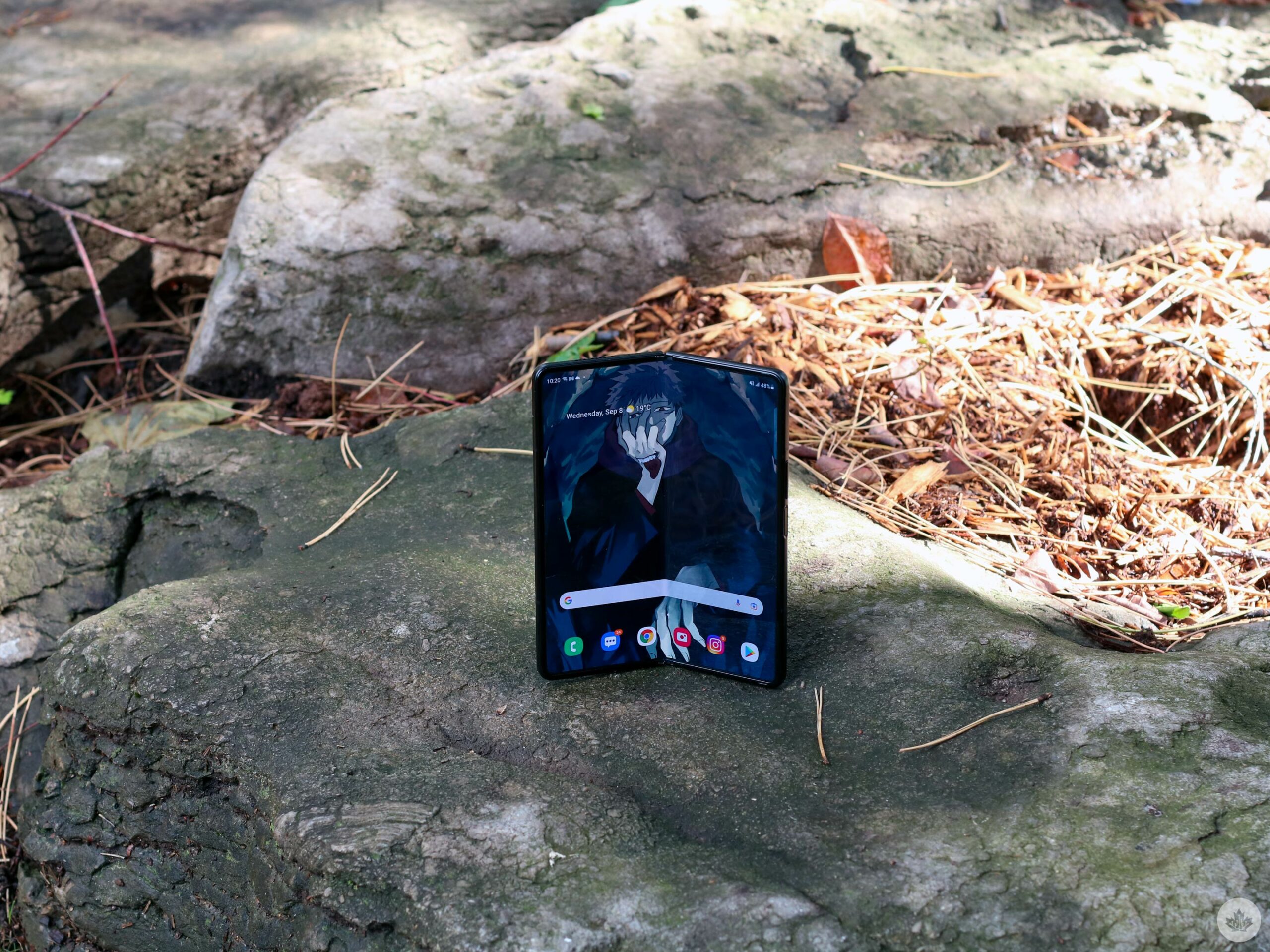
With the help of Samsung’s ‘Armor Aluminum’ frame, Z Fold 3’s body feels high-quality and very sturdy, especially when compared to the Fold 2. The South Korean company says that this new frame makes the foldable device 10 percent more durable than last year’s model.
The Z Fold 3 doesn’t include a headphone jack, like most modern smartphones. Other features worth noting include dual speakers at the top and the bottom of the device, a USB-C port, a SIM tray, and a trio of cameras on the rear.
Finally, this device is waterproof, so if you like to text while you’re showering, take a lot of boat rides, or often watch content while you’re in the kitchen cooking, you can finally do so safely with the Z Fold 3. Personally, I don’t tend to bring my phone near any liquid, but I did pour water on it to test out the water resistance and to take pictures of it wet. This is something you definitely couldn’t do with past foldable handsets.
Two screens are better than one
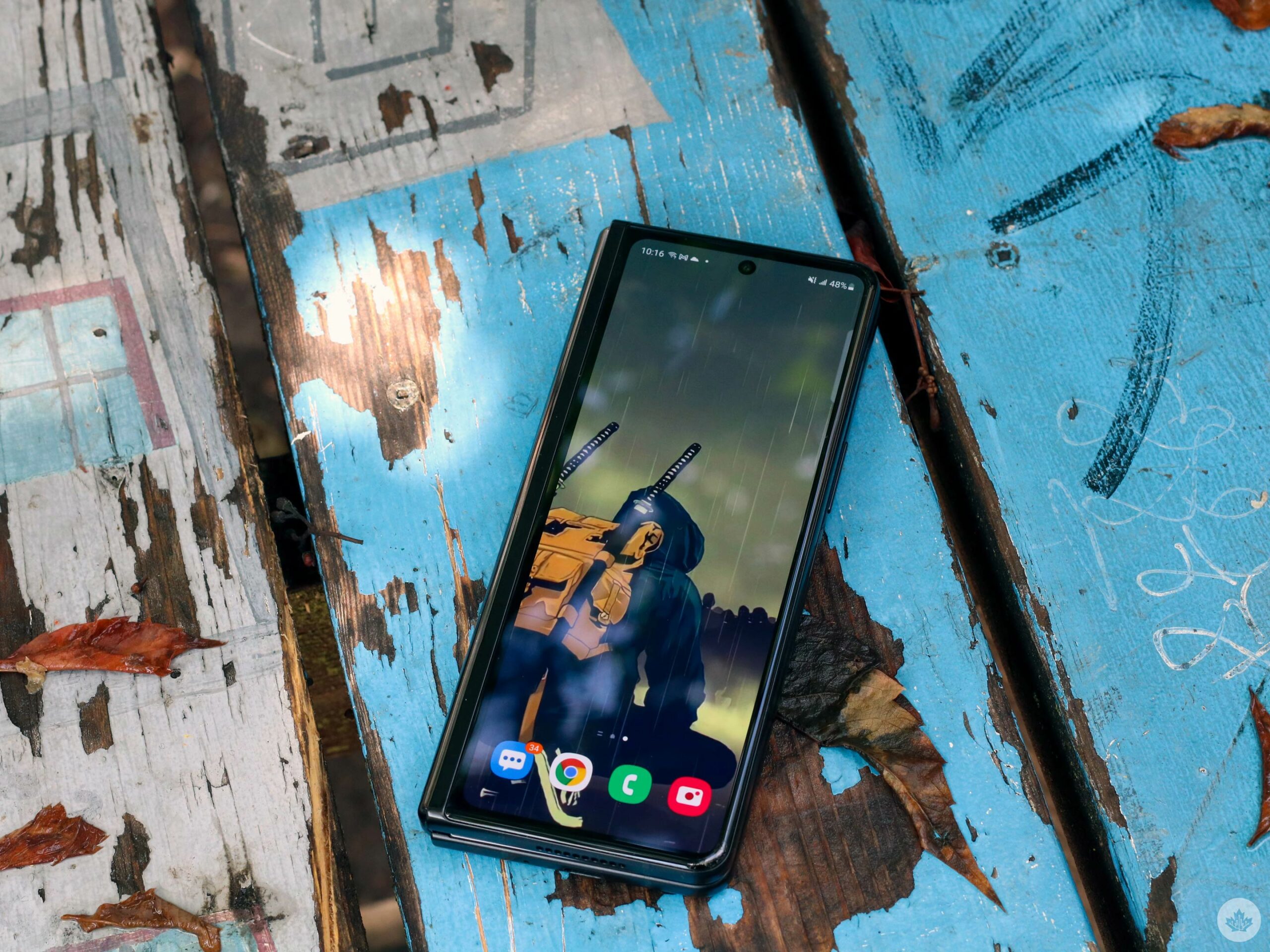
The Z Fold 3 includes two displays, a 6.2-inch ‘Cover display’ with an 832 x 2268 pixel resolution, and a larger 7.6-inch foldable display with a 1768 x 2208 pixel resolution. Both screens offer a smooth 120Hz refresh rate, which is an improvement over last year’s model; only the larger screen on the Z Fold 2 featured this higher refresh rate.
The Z Fold 3’s ‘Cover display’ is useful for quick tasks like shuffling music, scrolling through Instagram, swiping on Tinder, replying to texts, and reading an article or two. The screen isn’t any larger, and it offers the same awkward 25:9 aspect ratio as the Fold 2’s, but I found that I really didn’t mind using the smaller display — and I think that had to do with the higher refresh rate.
What’s far more impressive this time around is the Z Fold 3’s larger screen. Samsung Display says that the Z Fold 3 uses new Eco 2 OLED screen technology, which ditches the plastic polarizing layer that was on the Z Fold 2. Without that extra layer on top of Samsung’s Ultra-Thin Glass technology and polyethylene terephthalate (PET) screen protector, the phone’s display really feels like glass now. Still, around the crease, however, the illusion falls apart a bit. This area of the display feels a bit plasticky, but it’s not that bad.
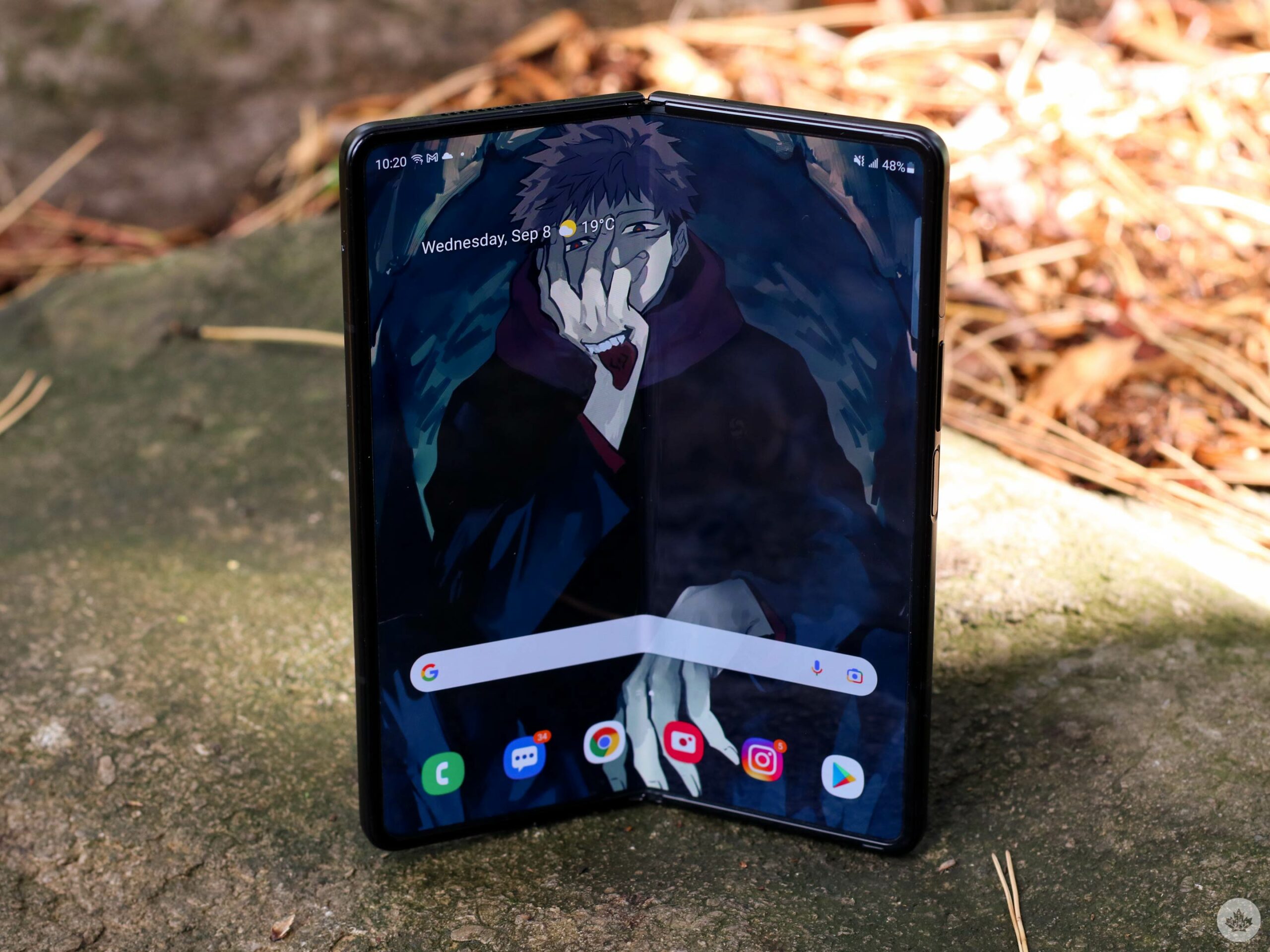
What’s even more exciting than the glassier screen is the pretty cool Under Display Camera (UDC). Samsung hid the front-facing camera cutout by placing display pixels over the camera lens. When your screen is displaying a white background, the pixels on top of the lens are very noticeable and look weird, which is something I noted in my hands-on. However, the UDC shines when you’re consuming media. While the pixels are still there if you look for them, they’re a lot easier to ignore compared to a hole-punch camera.
Speaking of that, even without a super high pixel resolution, I really enjoyed the viewing experience offered by the Z Fold 3. I watched several episodes of Good Girls on Netflix, videos on YouTube, and play games of Wild Rift. Colour accuracy was good, the display got as bright as I needed even on sunny days, and everything was pleasing to the eye.
The crease is here to stay
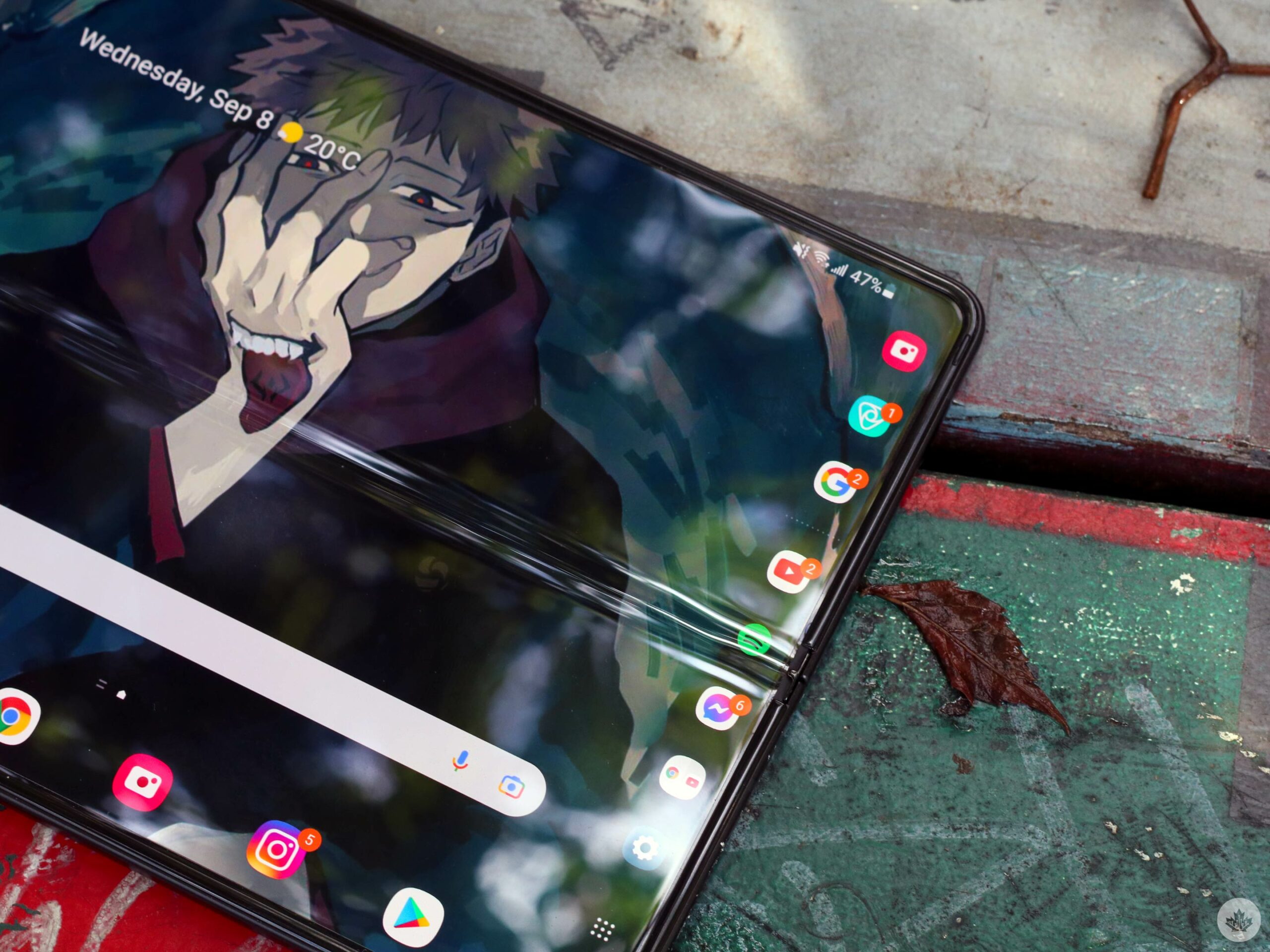
Just like the Z Fold 2 and Z Flip 3, the crease is still noticeable and I don’t think it will ever go away, as the screen needs to fold. Given this is the 3rd-gen Fold, if you’re purchasing a phone with a foldable display, you should expect it to include a crease. Just like last year, I forgot it was even there for the most part, especially when consuming media.
Besides, this phone is so much more than its crease.
It just makes sense
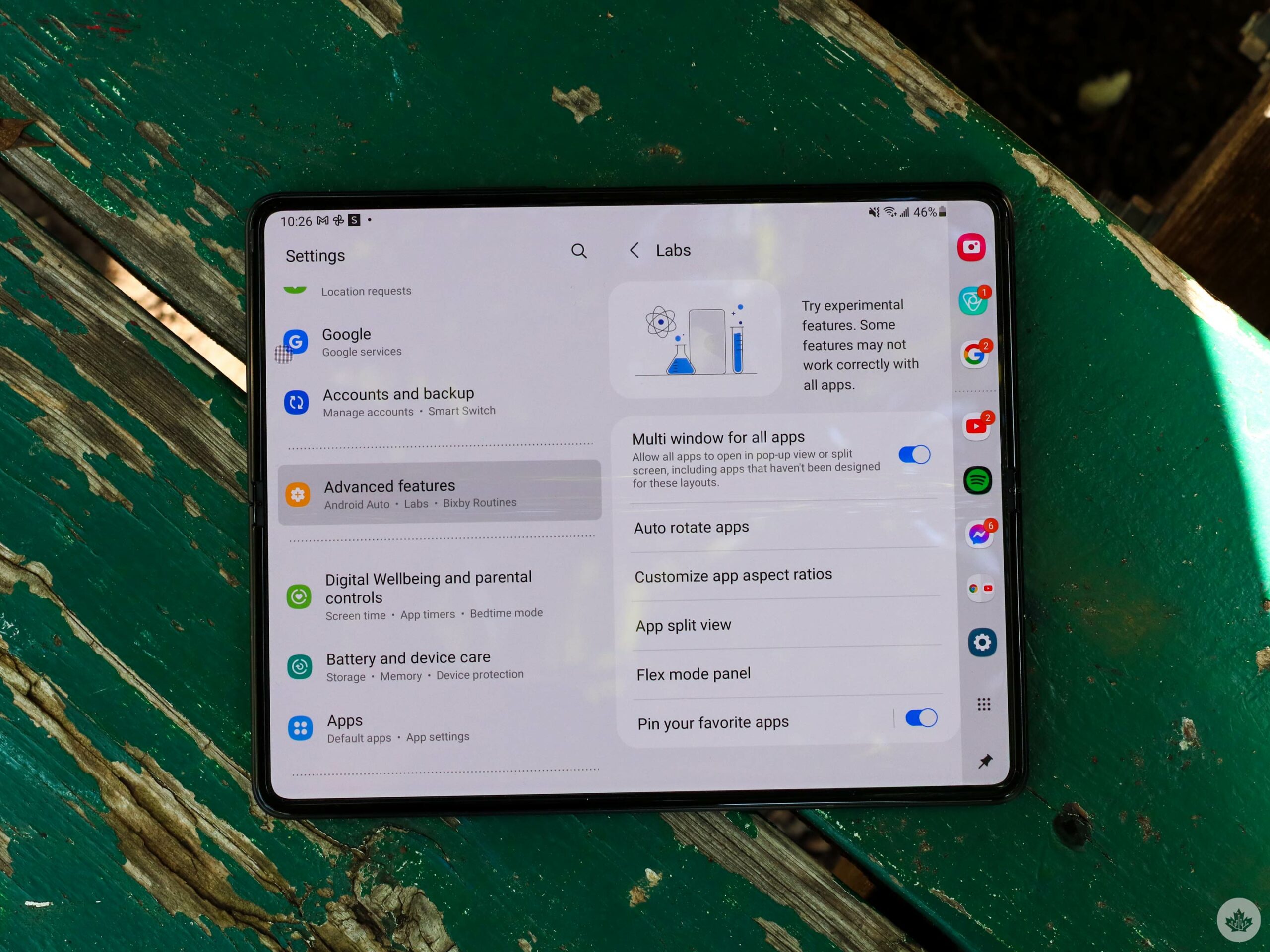
Samsung’s Galaxy Z Fold 3 runs One UI 3.1.1 on top of Android 11 and offers an incredibly smooth user interface experience.
My favourite example of this is that Samsung’s new Labs setting — which allows users to try experimental features — lets you customize the aspect ratio of an app. An issue I had with the original Z Fold 2 is that a lot of apps aren’t designed for such a large display. The main culprit for me was the Instagram app: it only took up the middle of the display, which caused issues when trying to watch stories. Now, you can force the app to utilize the Fold 3’s whole display, making the experience much better.
Another new feature I loved was the ability to pin all of your apps to the side of your screen. This feature turns your ‘Edge Panel’ into a taskbar and lets users quickly access their apps without having to pull on the edge of the display. Further, it also gives you access to all your apps with a new icon. Tapping that icon brings up all of your apps in a pop-up window, so you don’t have to stop what you’re doing and quickly switch to another app. This makes multi-tasking with the Z Fold 3 an absolute breeze. Additionally, you can now force every single app on your device to go split-screen. I found this especially useful for browsing the internet or Instagram while watching Netflix.
Another annoyance I experienced with the Z Fold 2 was that with most apps, you can’t fold the device and only watch content on the top half of the display. Again, with the new Labs setting, I’m able to change that. Now, I can force an app, like Netflix, to show the play/pause controls on the bottom half of the screen and the content on the top half. I really enjoyed doing this, as it allowed me to watch videos during my stretching routine and when lying down in bed without needing to hold the device.
It’s also worth noting that with the most recent update, many of these features are now available on the Z Fold 2.
Mini laptop in your pocket
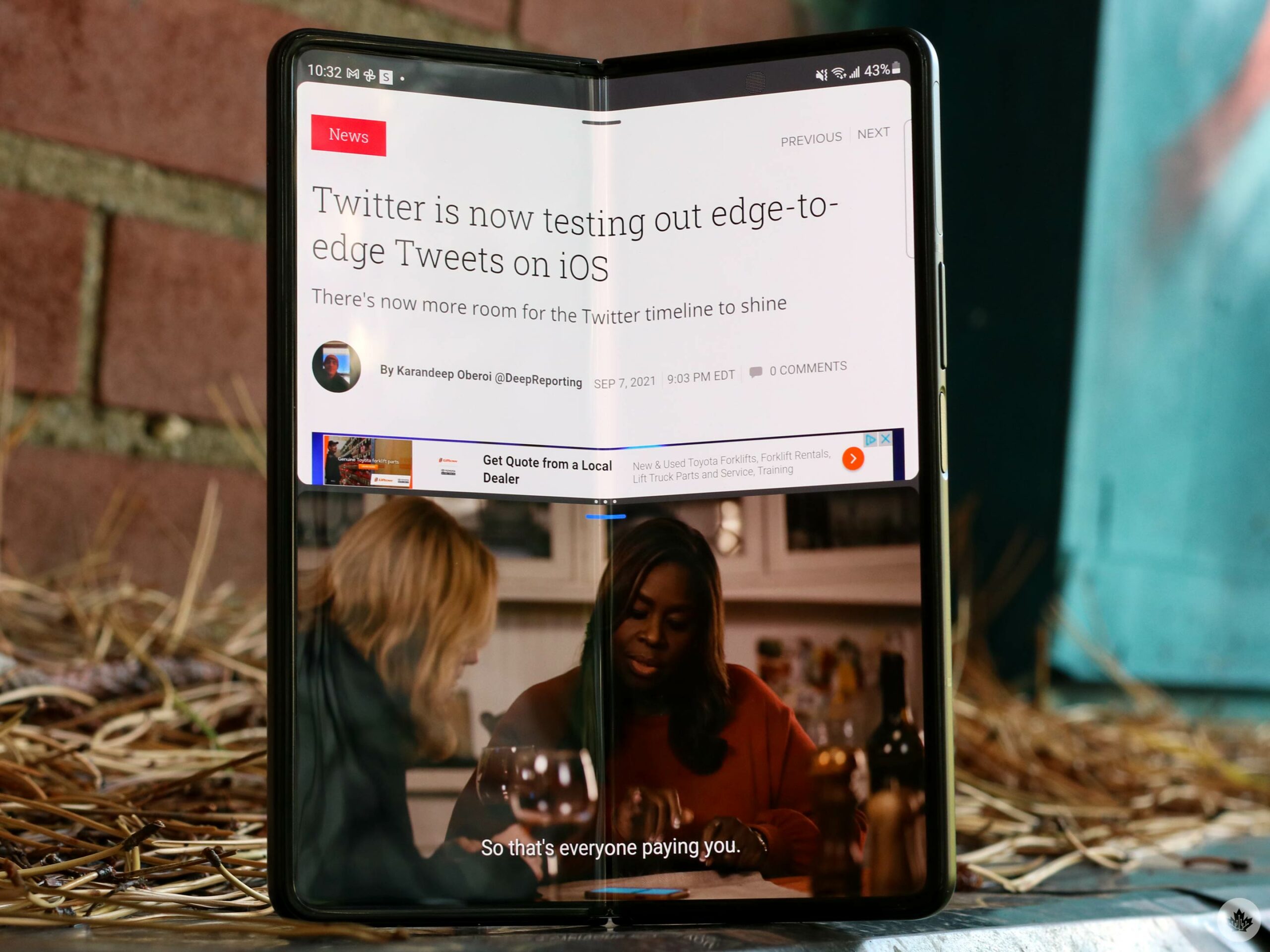
The Z Fold 3 features a Qualcomm Snapdragon 888 processor and 12GB of RAM, which ensures the phone runs incredibly smoothly with no delays.
I was able to run about 10 apps in the background, which doesn’t seem like a lot considering the amount of RAM, but it was barely noticeable. For example, apps open and load so quickly that I thought they were already running in the background. The only slowdown I experienced is when I was on the Cover screen and wanted to switch over to the main display while keeping the app open. Apps would typically need to close and re-open.
Additionally, I was able to play League of Legends: Wild Rift at its highest settings at 120fps and it ran beautifully with no hiccups. I played several matches, and I didn’t notice the smartphone warm up at all.
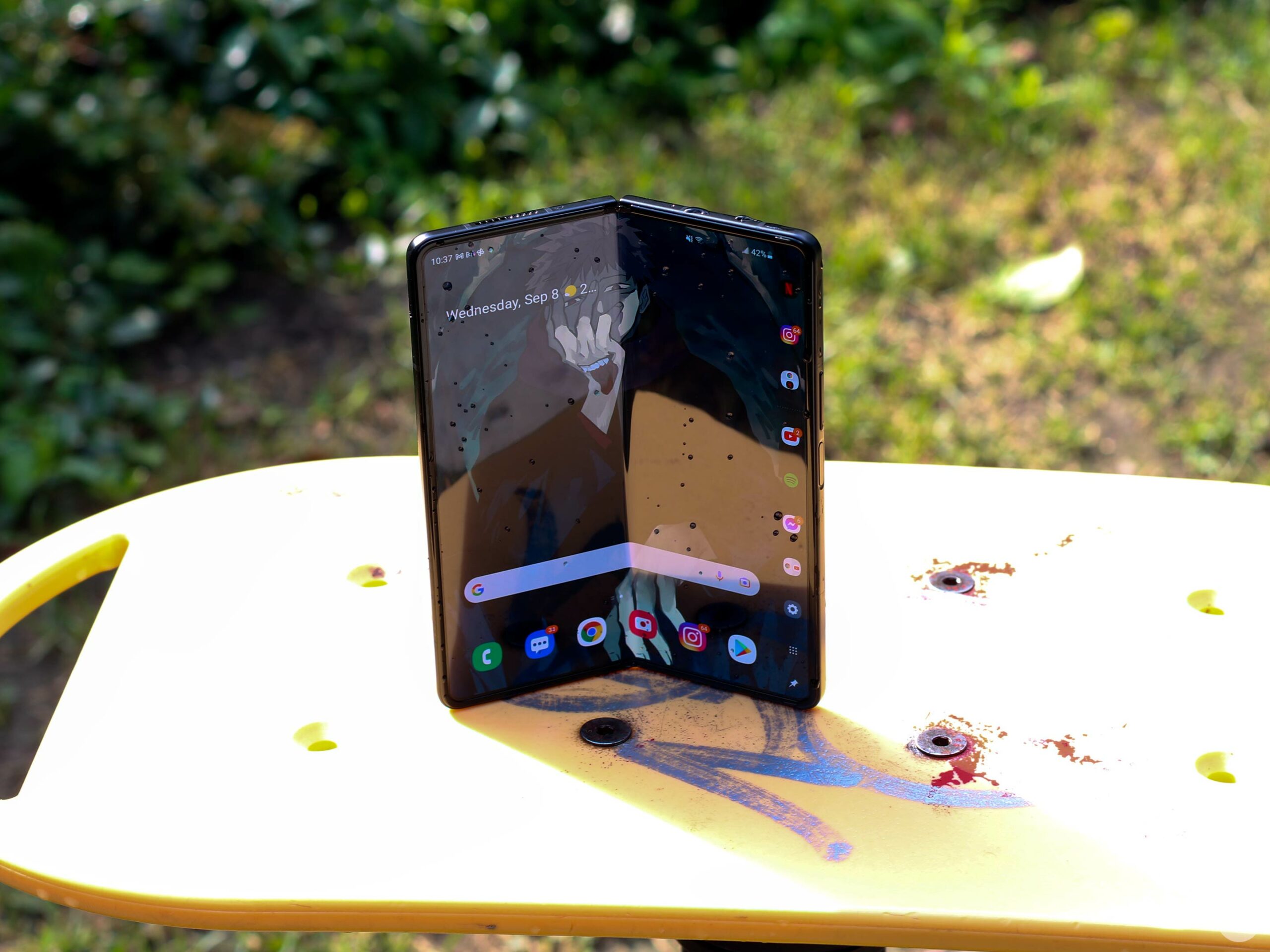
I ran a benchmarking test with GeekBench and the Z Fold 3 had a single-core score of 1,109 and a multi-core score of 3,185. To put this in perspective, the Z Fold 2 offered a single-core score of 937 and a multi-core score of 3,051; whereas, the S21 Ultra offered a multi-core score of 3,411 and a single-core score of 1,108. I don’t put much weight into benchmarks, but these are pretty favourable for an Android device.
“Though the Z Fold 3’s outside 10-megapixel is passable for selfies, the resulting images also aren’t detailed and it makes my skin a bit too bright.”
Unfortunately, the Z Fold 3’s battery life is a bit below average. I was able to squeeze four and a half to five hours of screen-on time, and the device would last the whole day, typically until about 11am the following day. It’s definitely not the best battery available, but it was more dependable than the Z Flip 3 and I wasn’t worried about bringing my charger with me when I went out.
Maybe the UDC isn’t needed?
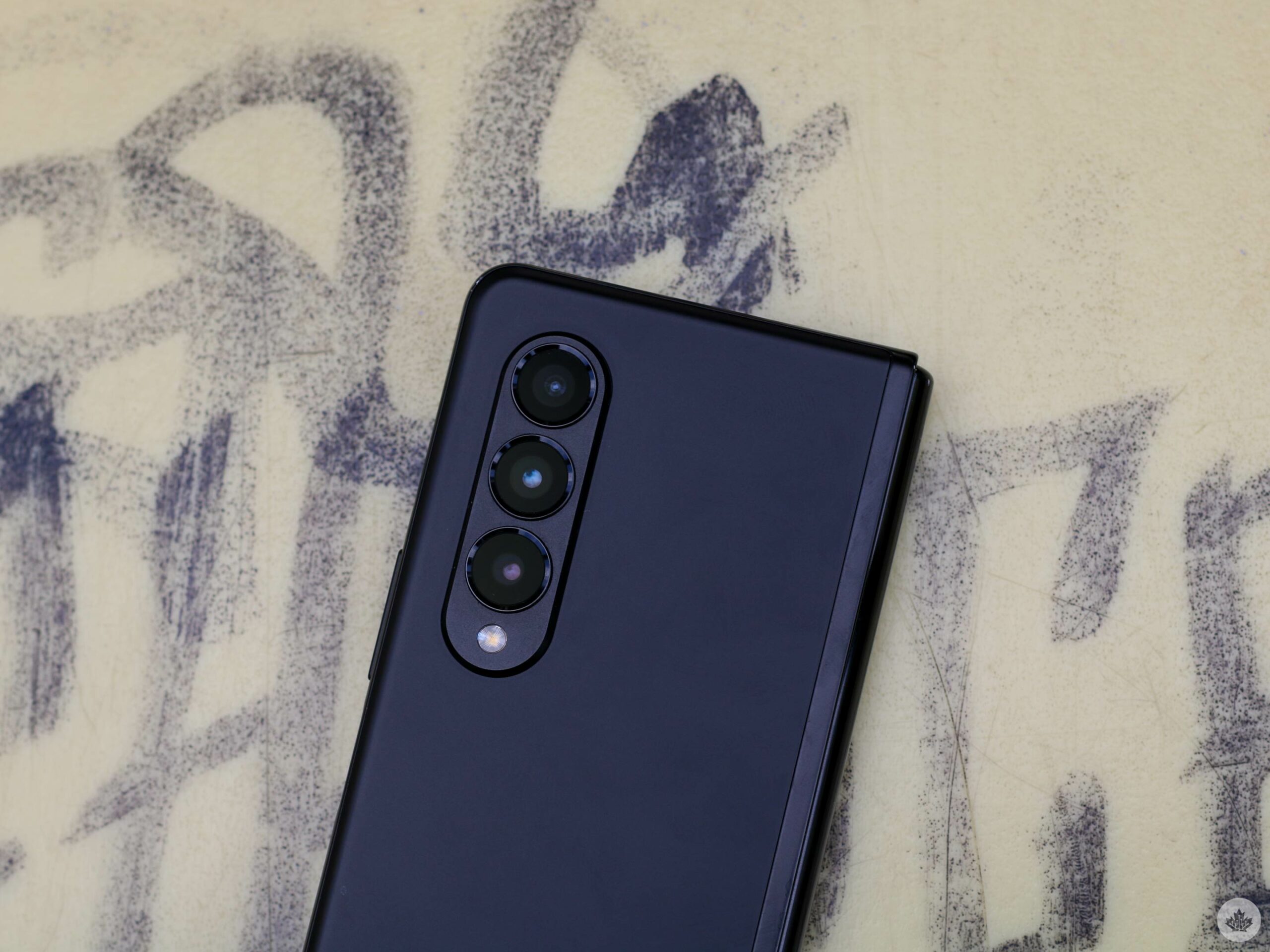
Samsung’s cameras this time around aren’t that different from previous devices. There are five different options to choose from: a trio of 12-megapixel shooters on the back, the Cover screen’s hole-punch camera, and the UDC on the main screen.
While the UDC is cool, it’s pretty unnecessary when there are so many other options. It’s more of a webcam for video conferencing and not a great one at that. While pictures taken with it are too bright and lack detail, you can just ignore it and take selfies with the Z Fold 3’s several other cameras.
Though the Z Fold 3’s outside 10-megapixel is passable for selfies, the resulting images also aren’t detailed and it makes my skin a bit too bright — but it’s still better than the UDC. And again, thankfully, there’s the trio of cameras on the Z Fold 3’s rear that work together with the Cover display, so you can still take pretty good selfies.
With these cameras, pictures are sharp, bright and vivid. The overall look of the images is pretty similar to the company’s other devices, and at this point, you either like the look of Samsung’s style of photos or hate it. I don’t mind it because I like the vibrancy of the pictures, but they aren’t as true-to-life as the images a smartphone like the iPhone 12 Pro shoots. Selfies with these shooters are far better; you can better make out hair follicles on my beard and the colour accuracy is far more on point. The images aren’t perfect, but they’re way better than a lot of other high-end smartphones.
With that in mind, it’s pretty laughable that the Z Fold 3 only has a 2X zoom for a phone that costs $2,269. For example, even 2020’s S20 Ultra featured a 4x zoom. If you want a Samsung phone with way more zoom, you should consider the S21 Ultra.
S Pen accessory
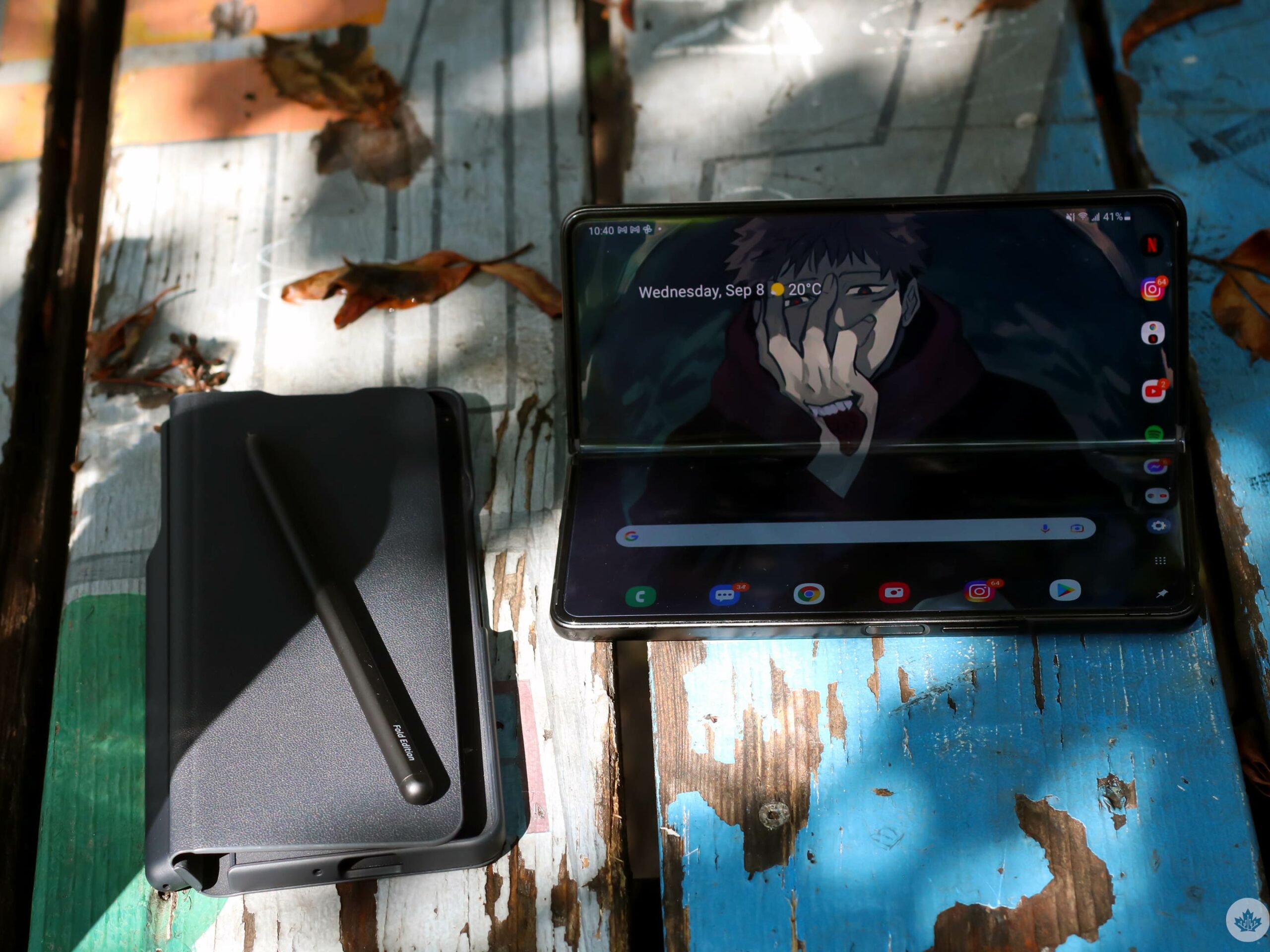
Like the S21 Ultra, you can use Samsung’s S Pen stylus with the Z Fold 3. However, you’ll need to purchase it and a case holder separately. I’m not a fan of the case because it covers the Cover display, but it also offers the phone a bit more protection.
I used the S Pen Fold edition, which has a 1.5mm tip and low latency. This S Pen lacks ‘Air Actions’ — you’ll need the S Pen Pro to get those features, which I didn’t get to try out. The overall experience is smooth and feels like using a stylus on a tablet, but the latency doesn’t compare to the Note 20 Ultra. That said, it doesn’t lag that much and is still very usable.
However, oddly enough, the S Pen doesn’t work on the Cover screen.
If you want the S Pen Fold edition, you’ll need to spend $59.99, and Samsung Canada isn’t offering the case that doubles as a holder yet.
The S Pen Pro with Bluetooth costs $129.99 and will work with other Samsung devices, including tablets, and allows for Air actions.
Is it time to buy a foldable?
The Z Fold 3 is water-resistant, more durable, $500 cheaper than its predecessor, has two good 120Hz refresh rate displays, a top-of-the-line processor, 12GB of RAM, and a user interface that is near perfect.
Should you buy it? If money’s not a concern, and you’re interested in a powerful smartphone with two displays, one of which is tablet size, I don’t see why not. As long as you can get over the crease, the size, the weight, and the gimmicky under-display camera, it’s a solid option.
I believe you’re going to start seeing more of these foldable monsters on the street as these devices become more mainstream and cheaper in price, but it’s definitely not the type of smartphone designed for everyone.
If you want a foldable phone, but don’t want to pay a rather large monthly bill, I’d definitely suggest the more affordable Z Flip 3.
As I mentioned at the top of this review, if I had $2,269 burning a hole in my pocket, I’d definitely head over to Samsung(or most of the Canadian carriers) to go purchase this positively exquisite handset.
The Z Fold 3 is water-resistant, more durable, $500 more affordable than its predecessor, has two good 120Hz refresh rate displays, a top-of-the-line processor, 12GB of RAM, and a user interface that is near perfect.
MobileSyrup may earn a commission from purchases made via our links, which helps fund the journalism we provide free on our website. These links do not influence our editorial content. Support us here.

